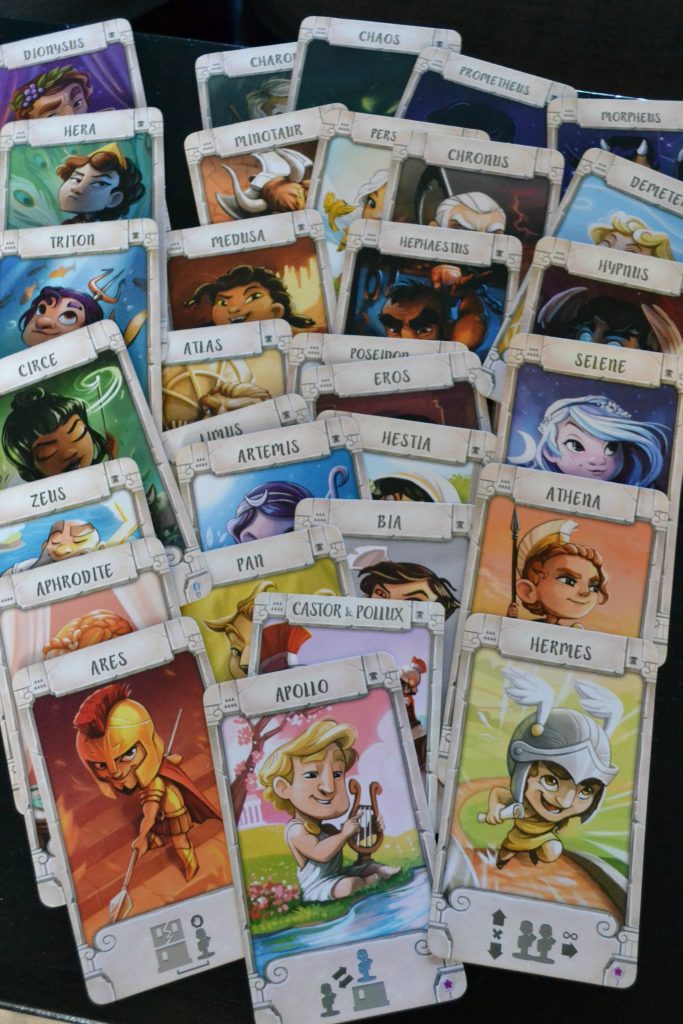This week we're once again turning the blog over to our resident Game Designer and Certified (by me) Game Expert. This week's game idea will once again dive into history for inspiration.

Family Game Night #35: Santorini
Abstract games like Chess or Go often polarize the gaming world. While a large number of players appreciate the simplicity and pure strategy involved, many are put off by the lack of theme and perceived dryness of abstract games.
However, Santorini defies these expectations with an updated presentation high on visual appeal and thematic elements. Over thirty years in development, this pure abstract game recently got a total makeover. This transformed it into a sparkling gem of the hobby board game pantheon.
Introduction to Santorini
The first thing you will notice about Santorini is its dramatic visual flare. The board rests atop a plastic base made to look like a rocky cliff elevating the gridded play area out of the swirling Aegean Sea.
The bright white buildings and towers, topped with blue domes, are placed on the grassy board. This replicates what you might see in the real-world Greek island city of the same name.
Four small figurines representing the various Greek deities and heroes of ancient mythology dance among these buildings. The gods are further depicted in beautifully-illustrated cards, each with a special ability.
 Playing Santorini
Playing Santorini
At its core, the game is a simple logic game.
Players alternate moving one of their two figurines to an adjacent space and then build a section of the city.
Each city block can be built up to three levels high, topped by a fourth level: the blue dome.
The object of the game is to move one of your figurines onto the top of a third level of a building. Since players may only move up one level at a time, using the buildings as steps, the game can quickly become challenging. An opponent can easily block clumsy efforts to ascend by capping off adjacent buildings with higher levels and blue domes. Cunning strategy must be employed to succeed.
 Recent Editions
Recent Editions
This introductory game stands on its own, but in this most recent iteration there is a big twist once you learn the basics:
Each player will also have two god/hero cards giving them two special abilities during the game.
Some of these cards give players an additional win condition, such as building five completed towers or getting both figurines on level-one buildings.
Others provide additional actions, such as building more sections during a turn or moving more than one space at a time.
With a total of 40 cards, not counting promos or other special sets, the combinations are legion—players will have a new experience every game.
Summary of Santorini
Number of Players: 2-4, but it shines as a two-player game
Recommended Ages: 8+, but we've played with kids as young as 6 or 7.
Reading Required: No
The game is widely available at a great price point, usually $25-30. This makes Santorini an exceptional value considering all the combinations of play and lovely bling in the box. We highly recommend this game for your family.
P.S. If you're looking for more Ancient History game ideas, see our review of 7 Wonders! (Or check out how we teach Ancient History.)








